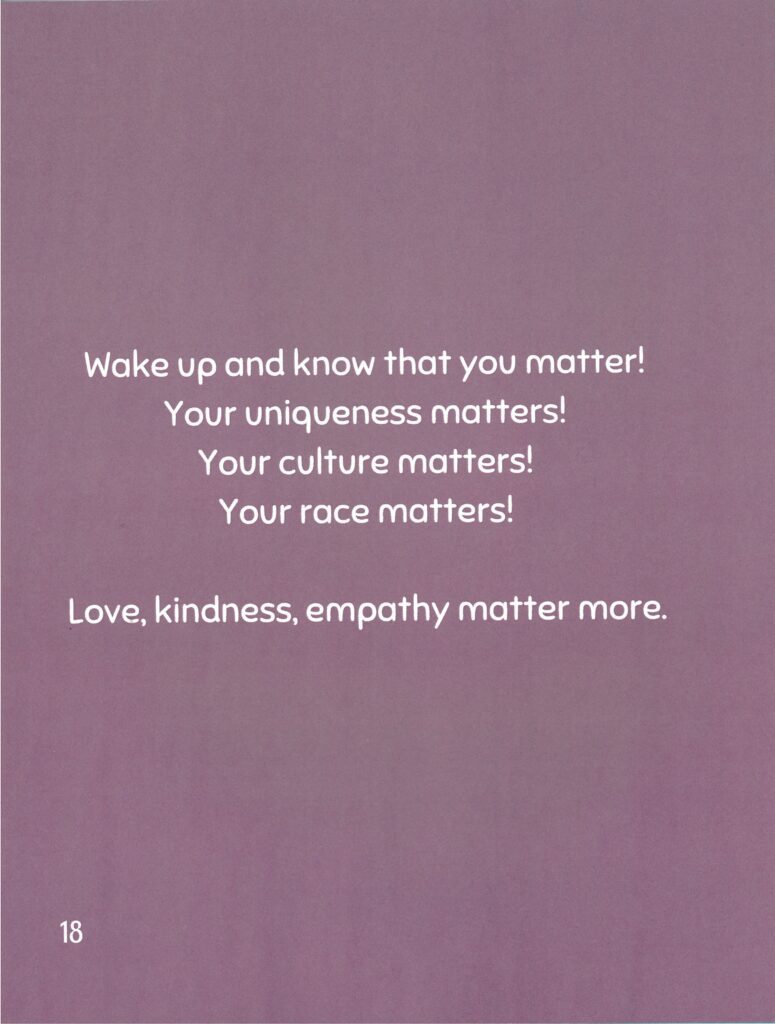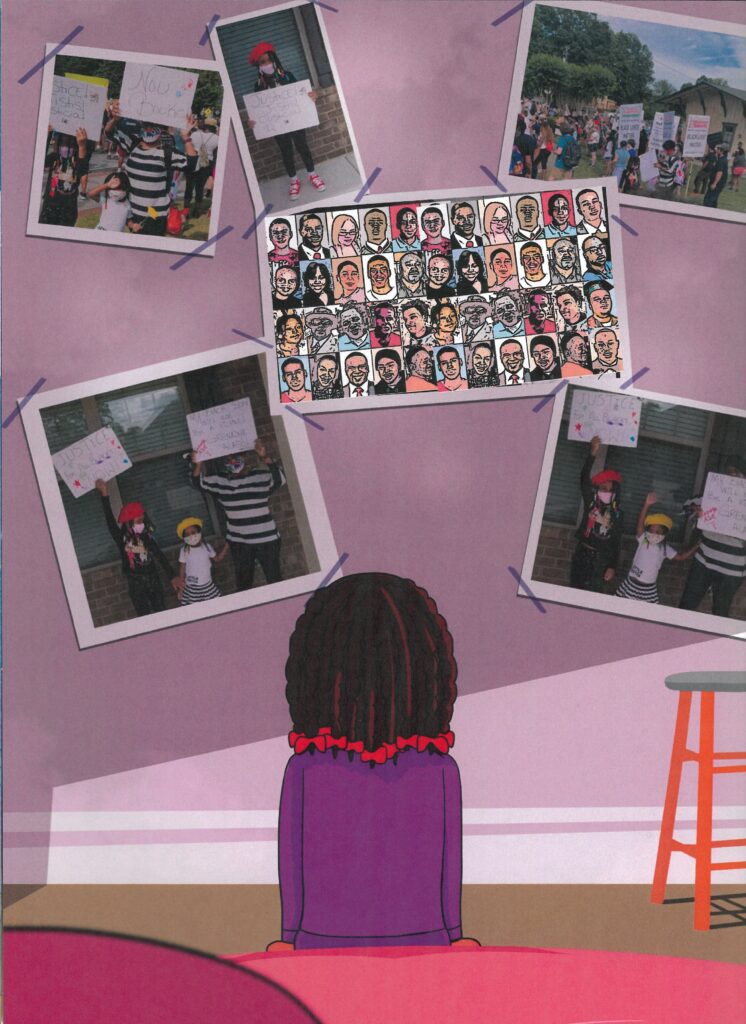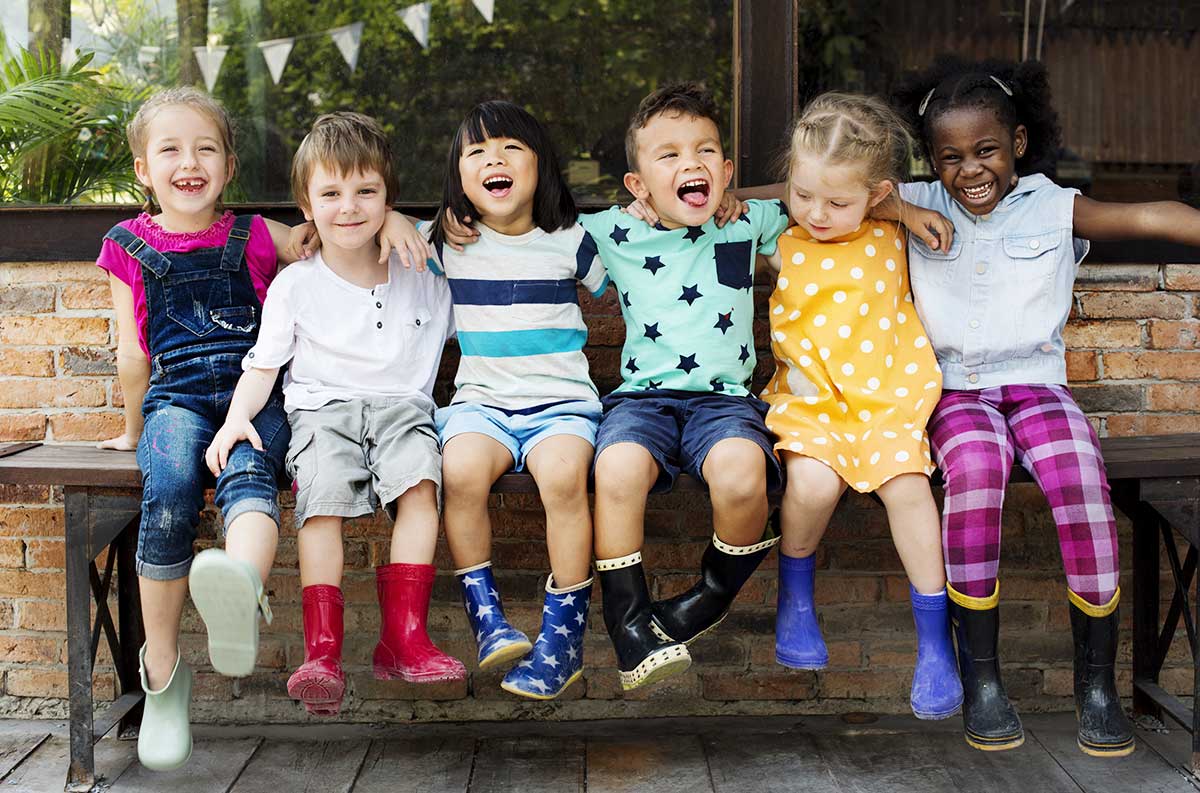
Inclusive Children's Book Teaching Guide
Wake Up
What is this book about?
Wake Up promotes an appreciation of human diversity by teaching young children to accept and celebrate others for who they are—and to use their voices to speak out against injustice.
This colorful picture book also fosters self-acceptance by reinforcing the message that every child matters, their uniqueness matters, their culture matters, and their race matters.
This primer on diversity and inclusion will lead to many meaningful discussions about love, kindness and empathy.
Who is depicted in this book?
- Diverse children engaging in acts of cooperation
- A child speaking out about injustice
What early childhood themes and concepts does this book explore?
- The voices of children are important.
- Standing up for others and for what we believe in is a critical form of self-expression and communication.
- The concept of change
How does this book support anti-bias education?
By emphasizing the importance of children’s unique individual voices, this book empowers children to use their voices to speak out against injustice.
Teachers can help plant the seeds for this empowerment by giving children the confidence and vocabulary they need to stand up for themselves and others when confronted with injustice.
Note that this book emphasizes the importance of social action, rather than focusing on particular causes or issues. It depicts a child speaking out in different contexts and ways, but the issues are left to the imagination of the reader or listener.
Depending on how the book is shared or used—and the developmental level of the children—Wake Up may be used to support the following core goal from the book, Anti-Bias Education for Young Children and Ourselves:
Activism—Teachers will cultivate each child’s ability and confidence to stand up for oneself and for others in the face of bias so that children will demonstrate a sense of empowerment and the skills to act, with others or alone, against prejudice and/or discriminatory actions.
How can this book be used to meet early childhood learning standards?
For all ages
Use Wake Up to meet early childhood literacy standards
For children from birth to age three
Teaching suggestion: Point out the familiar settings of home and community and the activities that the child in the story is engaged in.
What Illinois Early Learning Guideline does this meet for children from birth to age three?
Developmental DomainCognitive Development
Standard: Concept DevelopmentChildren demonstrate the ability to connect pieces of information in understanding objects, ideas and relationships.
Indicators for children:
- Begins to identify and name objects and people (16–24 months)
- Begins to identify characteristics of the object, such as “red ball” (16–24 months)
- Identifies characteristics of objects and people when named, such as colors (21–36 months)
Teaching suggestion: Point out and describe the features, similarities and differences among the diverse children in the book.
What Illinois Early Learning Guideline does this meet for children from birth to age three?
Developmental DomainCognitive Development
Standard: Concept DevelopmentChildren demonstrate the ability to connect pieces of information in understanding objects, ideas and relationships.
Indicators for children:
- Begins to focus on objects, sounds and people (Birth–9 months)
- Identifies and indicates objects and people in pictures (7–18 months)
- Begins to identify and name objects and people (16–24 months)
- Identifies characteristics of objects and people (21–36 months)
Teaching suggestion: Point out examples of the child in the story acting to produce a positive outcome (e.g., teaching, helping, reading to others) in ways that reflect the youngest children’s understanding and motivations. Notice and narrate these behaviors when children engage in them.
What Illinois Early Learning Guideline does this meet for children from birth to age three?
Developmental DomainSocial-Emotional Development
Standard: Relationship with PeersChildren demonstrate the desire and develop the ability to engage and interact with other children.
Indicators for children:
- Shows interest in and observes other children in the environment (Birth–9 months)
- Engages in simple reciprocal interactions with peers (7–18 months)
- Engages in parallel play (16–24 months)
- Participates in sharing, communicates with other children, and begins to engage in more complex play (21–36 months)
Teaching suggestion: Point out instances when children stand up for themselves in everyday contexts. Provide support by interpreting their behavior for peers: “They are telling you that they don’t like it when you do that. She is saying STOP.” In this way, you can help validate their voices and encourage all of the children to stand up for themselves and others by speaking up.
What Illinois Early Learning Guideline does this meet for children from birth to age three?
Developmental DomainSocial-Emotional Development
Standard: Relationship with PeersChildren demonstrate the desire and develop the ability to engage and interact with other children.
Indicators for children:
- Expresses frustration when another child takes something away (16–24 months)
- Demonstrates enthusiasm around other children (16–24 months)
- Becomes frustrated with peers, such as yelling “No!” if a peer tries to interfere with an activity that the child is engaged in (21–36 months)
- Communicates with other children in different settings (21–36 months)
For preschoolers (ages three to five)
Teaching suggestion: After reading the book, ask the children to share their ideas about why the child in the story was speaking out. Ask: "What is an example of something that is not right that we should speak out about?"
What Illinois Early Learning and Development Standards does this meet for preschoolers?
The Arts Standard25BDisplay an awareness of some distinct characteristics of the arts.
Benchmark 25.B.ECa:
Describe or respond to their creative work or the creative work of others.
Teaching suggestion: Discuss what it might mean to feel voiceless. Ask the children: "Who might be voiceless and how can we help them?"
What Illinois Early Learning and Development Standards does this meet for preschoolers?
Social/Emotional Development Standard31ADevelop positive relationships with peers and adults.
Benchmark 31.A.ECb:
Recognize the feelings and perspectives of others.
Teaching suggestion: Discuss what the author means when she says, "Wake up." At the beginning of the story, she wakes up at home in the morning. But as the story continues, the phrase is used to convey the more abstract concept of becoming aware of others who need our support or waking up to injustices that we can help change.
What Illinois Early Learning and Development Standards does this meet for preschoolers?
Social/Emotional Development Standard31ADevelop positive relationships with peers and adults.
Benchmark 31.A.ECa:
Show empathy, sympathy, and caring for others.
See inside this book.


What other resources are available?
Wake Up is available in several different bilingual versions.
